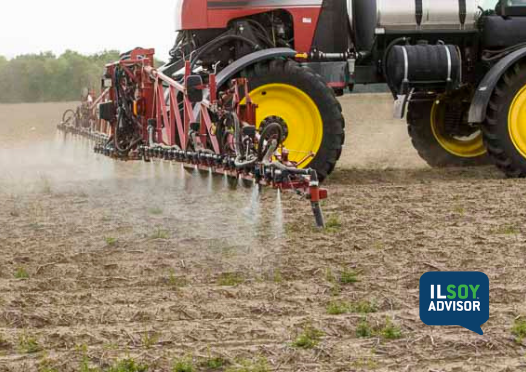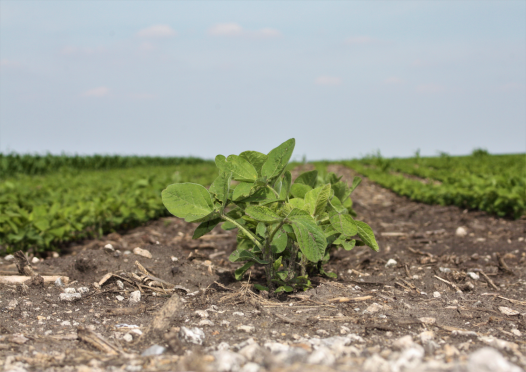ILSOYADVISOR POST
Weed Management: Dealing With Waterhemp Resistance
During the last two years waterhemp has exploded in soybean fields. Are they herbicide-resistant? Were they too tall to be controlled by a post herbicide application? Did they receive their post herbicide application or was it too wet? Had herbicide residual leached away? Was the waterhemp emergence probably due to late-emerging populations?
We can’t be sure if the problem is herbicide resistance without testing, but in the last few years, we assumed that more and more waterhemp (and other weeds) are now resistant to glyphosate. As of last year, based on testing, it was estimated by Dr. Aaron Hager, University of Illinois Crop Science Weed Specialist, that around 20% of waterhemp in Illinois is resistant to glyphosate alone.
Since 2013 it has become evident to growers that glyphosate was not working anymore, so they have turned to conventional herbicides for weed control in soybeans. They turned to a group of herbicides that seem to have the next best activity on waterhemp, the group 14 herbicides—Cobra® is one of the best known—referred to as PPOs or burners for obvious reasons, as they burn the leaves of weeds.
Often times, in the worst case scenarios, growers were applying up to a 3-pass herbicide program that consisted of pre- and post-herbicides of PPO residuals to combat amaranths (waterhemp, pigweed and Palmer amaranth) that continue to emerge throughout the season. Again, we began using the same herbicide mode of action (group 14) just as with glyphosate (group 9) within the same growing season. What has happened? We are now realizing that not only is the waterhemp resistant to glyphosate (group 9), but it’s also resistant to PPO herbicides (group 14).
Last year Dr. Aaron Hager, based on testing, estimated that 15% of the waterhemp in Illinois was resistant to PPO herbicides alone and 52% of Illinois waterhemp was resistant to both glyphosate and PPO herbicides. I suspect that the percentage of PPO-resistant waterhemp has only grown in 2015. In areas of the Midwest, waterhemp has not only become resistant to glyphosate and PPO herbicides, but also ALS (Group 2) and HPPD (Group 27) herbicides.
What can we do now for amaranth (waterhemp, pigweed or Palmer amaranth) control in soybeans?
- Start clean: Use burndown herbicides or tillage.
- Must have a preresidual herbicide (e.g., PPO Group 14 herbicides). Many are available as premixes and consist of multiple sites of action—be sure to apply at the full rate.
- Scout two weeks after crop emergence and apply a post/foliar herbicide (include a residual if needed). Make an attempt at a different site of action than the preresidual herbicide application (e.g., if planting herbicide-traited soybeans: Liberty®, Group 10 herbicide; Dicamba; or 2, 4 – D, Group 4 herbicides). Apply herbicides according to their label before weeds are too tall. The key is coverage because of thick and varied emergence.
- Scout one to two weeks after post-herbicide application to make sure weeds are being controlled. Palmer amaranth may require another post foliar herbicide application before it is 4 inches tall.
- If all else fails, chopping crews will be needed before weeds reach the reproduction stage to prevent the spread of millions of seeds.
The key to curtailing waterhemp resistance is to rotate herbicide sites of action (different herbicide site-of-action groups) within each season, not just every year! Rotating different herbicide groups within a corn cropping system is easy, but when it comes to good waterhemp control, rotating herbicide sites of action within soybeans is not as easy. If you are not sure what group the herbicide that you are using belongs to, this website is a great reference.
Stephanie Porter is a Burrus Seed Sales Agronomist. Read more about Stephanie here.





Comments
Add new comment